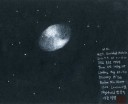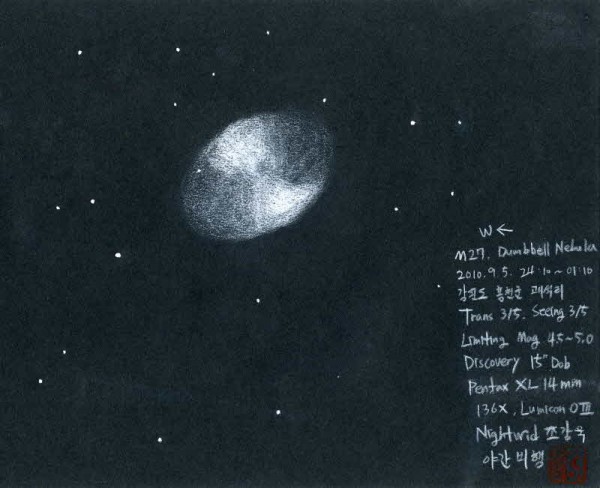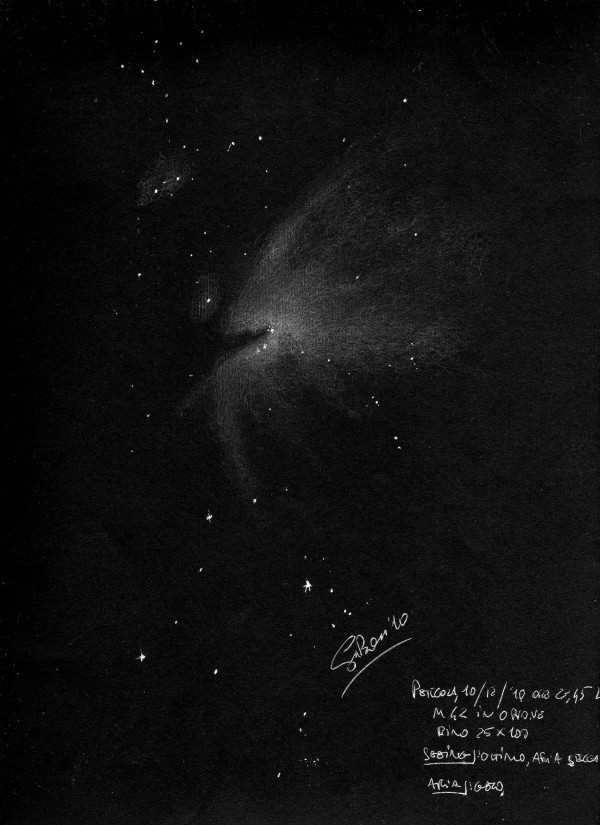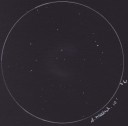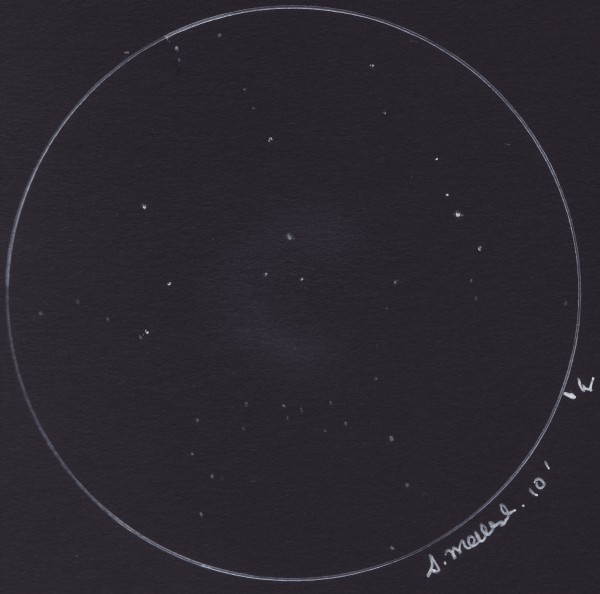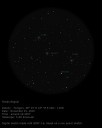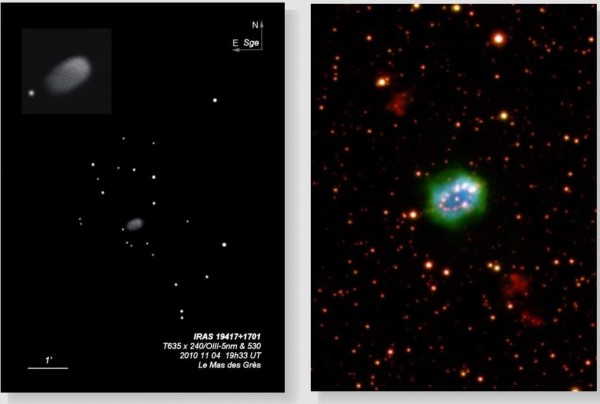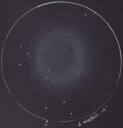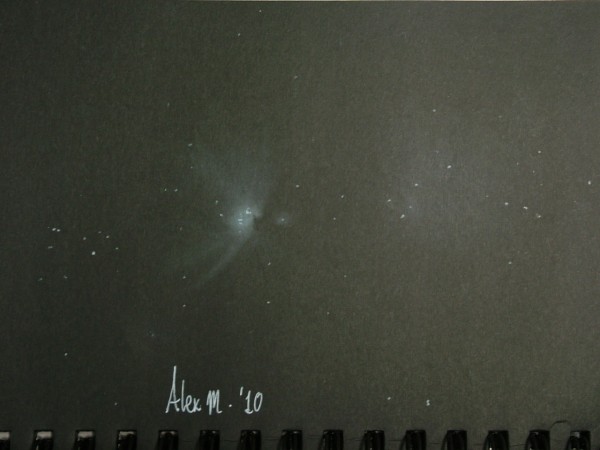
Hi all,
Tonight I received one of my biggest and most pleasant surprises at the eyepiece. It wasn’t using a half metre + monster, nor from an especially dark site. Rather, it was using my nearly 30 year old 2” f/12 Tasco refractor, and from my home in Sydney!
Over a year ago I purchased an adaptor to allow me to use 1.25” eyepieces with this little refractor, with the idea of one day making it into a finder scope. Tonight I finally got to try it out, and dust off the little refractor after many years of being unused. What I didn’t expect was the image I was to see of M42. Even the eyepiece used was a modest Super Plossl 25mm.
When I first used this little telescope, all I could see of M42 was the inner core nebulosity that surrounds the Trapesium. Tonight, despite the extra light pollution, but with 30 years experience, and I guess better eyepieces than the original, DIDN’T I SEE DETAIL!!
I even managed to see the faint, nebulous glow that makes up the Running Man nebula too.
This is the first sketch I managed to do at the eyepiece, since my meeting with Scott Mellish, nearly 2 months ago!
Scott, many thanks again for showing me your amazing technique. It has changed the way I sketch DSO’s with a pencil, paper and a dry paint brush!
Gear: 2” f/12 thirty year old refractor
Eyepiece: 25mm Super Plossl, 24X
Filter: OIII
Media: white pastel, white and black charcoal on black paper
Date: 30th December 2010
Location: my backyard, Sydney
Alex M.
